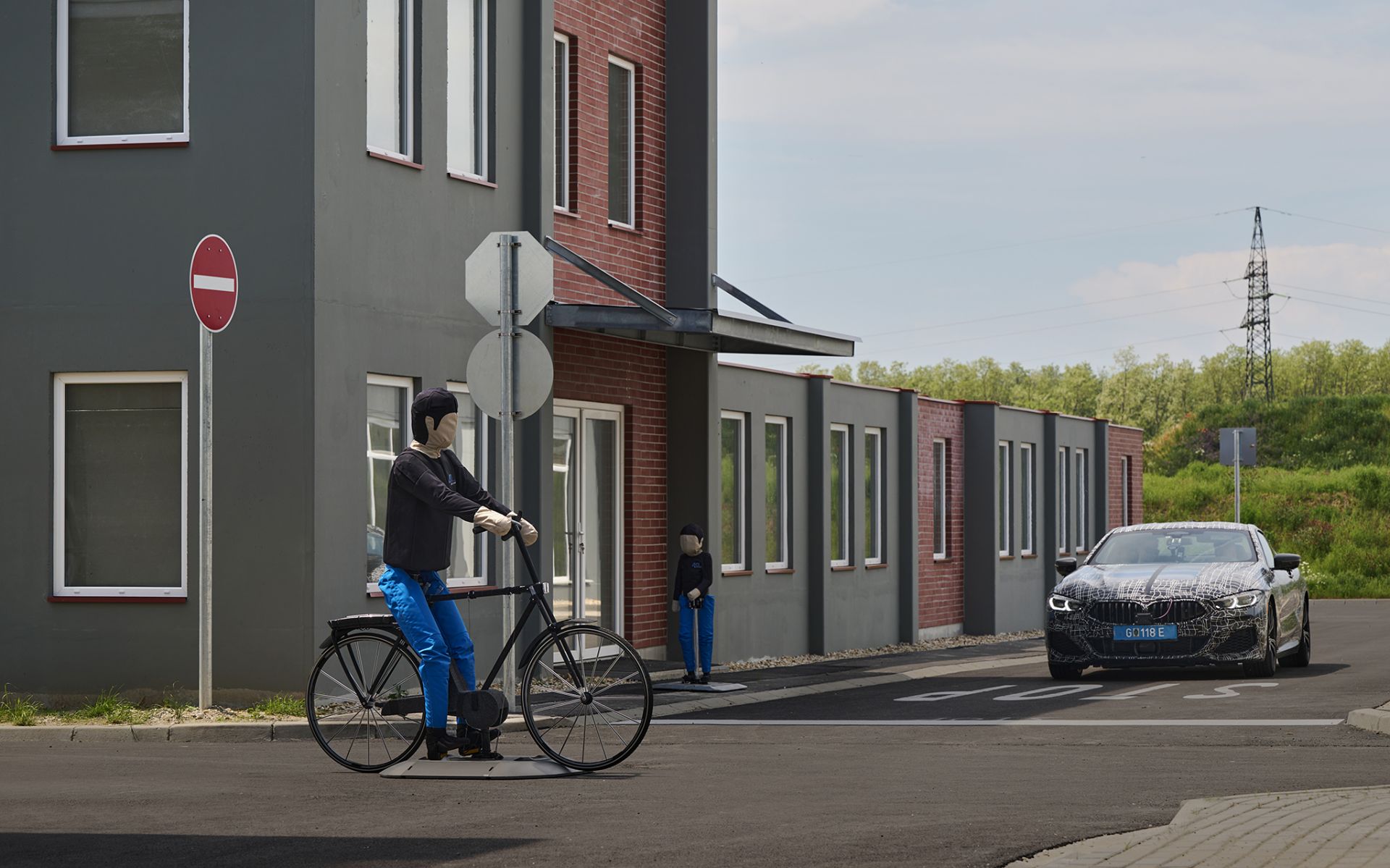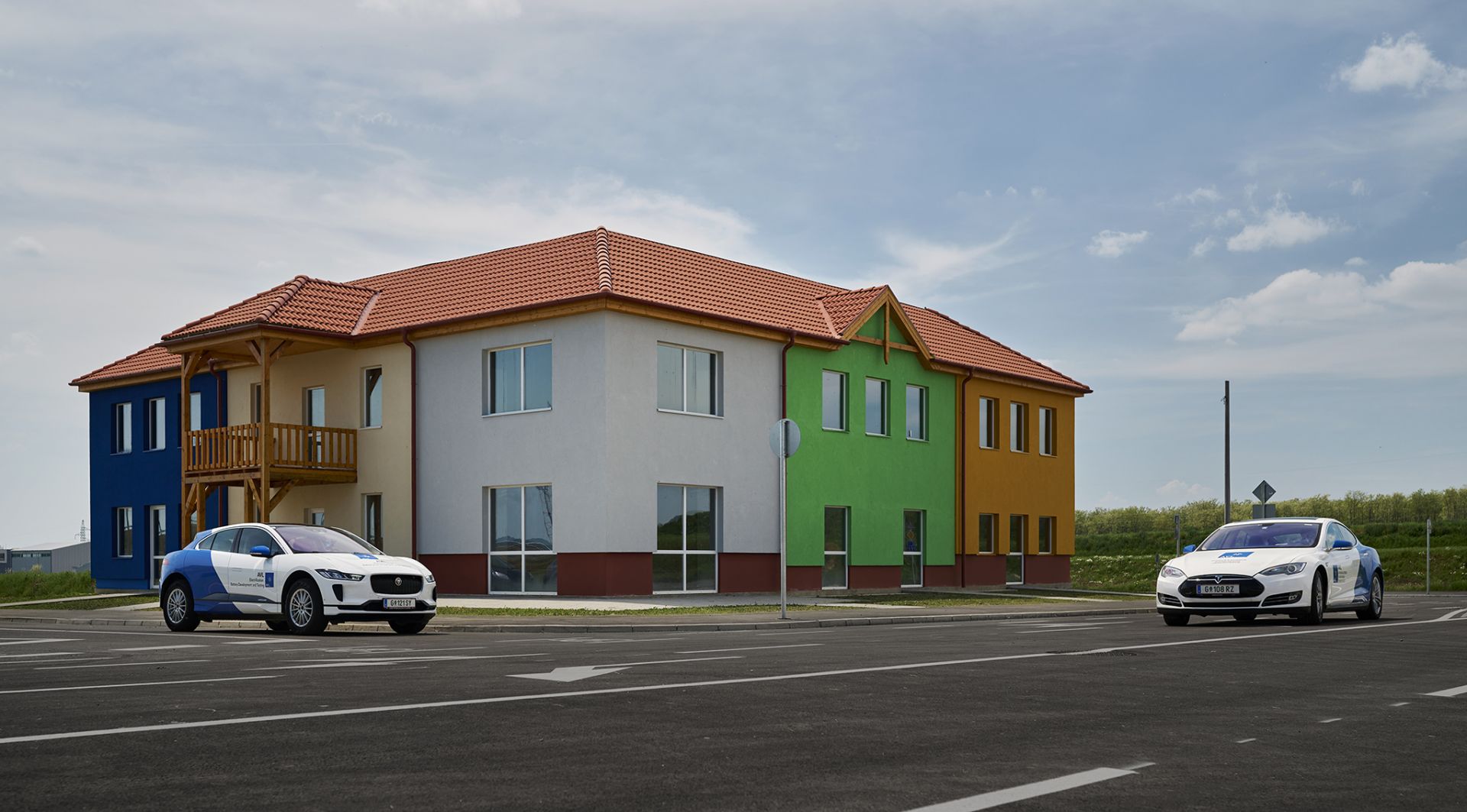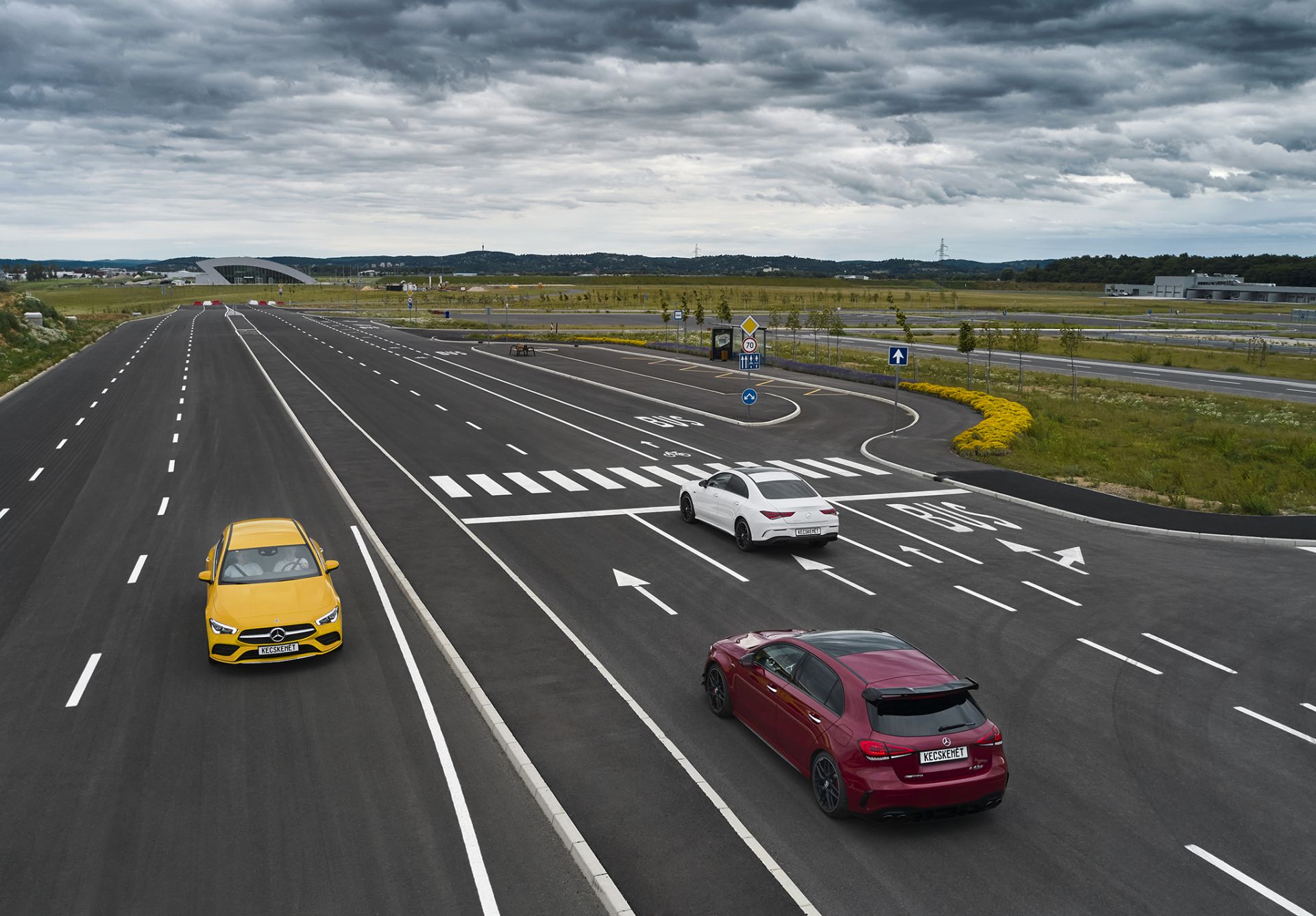
- Homepage
- Test tracks
- Smart city
Smart city
Technical parameters
- Area size: 15ha
- 5 sub-modules
- Various urban and suburban environments
Description
The smart city is a new state-of-the-art module at AVL ZalaZONE Proving Ground and an European ADAS/AD test infrastructure benchmark providing 5 sub-modules or different urban testing environments.
- low speed parking zone with a logistics yard for commercial vehicles,
- downtown area,
- high speed urban multi-lane area,
- suburban / residential area,
- special “T” intersections zone.
- Hill section with 10 and 20 % increase
With the largest city block size 25x60m, the complete smart city area is 15 ha, and considering the various urban environments, allows for numerous traffic, technical (NCAP / V2X), and dynamic test scenarios where speeds up to 70km/h can be reached and vehicles up to 40t can be tested. Specifically, the constructed area contains numerous lanes 2.75-3.5m wide at lengths of 25-500m. Road marks / traffic gantries & signs, street lights, rail/streetcar track crossings, pavement types (asphalt, concrete, basalt, gravel), and road geometries where intersections, roundabouts, and slopes (10-20%) serve to replicate real European cities. Each sub-module will have buildings and/or building facades typical of its area, i.e. a 10m high urban canyon facade in the downtown area.
This complex module’s physical characteristics allow for both vehicle dynamic and ADAS/AD tests. Low speed platooning at various junctions and lane layout as well as emergency braking in an urban environment using different barriers (static or moving) on high and low µ surfaces can be set-up. Specifically, urban traffic scenarios can incorporate multiple vehicles to engage ABS, ATC, ESP activities. Furthermore, cooperative tests combining vehicles, pedestrians, cyclist, and other VRU can be investigated. From a parking point of view, different layouts and driving situations can be explored such as valet parking, parking assistant systems, and smart parking infrastructure. Even different urban road construction zone scenarios where a diverse range of road side objects: building facades, trees, parked cars, weathered road signage, fences, garbage containers and so on can be set-up for ADAS/AD tests. With these seemly endless number of traffic scenarios , along with the availability to test under V2X 5G/DSRC environment, the most complex integration tests of V2X including the smart city’s “digital twin” for parallel simulation scenarios are possible. Lastly, the connection to the internal road network on both ends of the module permits inter-module testing and “everyday real life” scenarios such as last mile function with various combined mobility.
Smart City Zone provides a unique purpose-built city environment for testing the functionality of connected and automated vehicles and related technologies. Radar, lidar, and ultrasonic reflections must be tested on the most common materials that can be found in the cities surrounding the streets, such as concrete, steel, glass-composite, wood, plastic, etc. The visibility limitation within an intersection challenges the perception layer of the future cars thus not enough to have sensors but also this vehicle's automated functions need to use communication technologies. This realistic urban environment makes the investigation of this new city-like situation in a safe way. Variety of our Smart City Zone's facade intends to cover more different design concepts including office building, residental house, and industrial buildings as well. The facades will be available in different heights, e.g. in the downtown sub-area of the Smart city they reach a height of 9 m but we can provide lower facades with 6 and 3 m height depending on the location.





